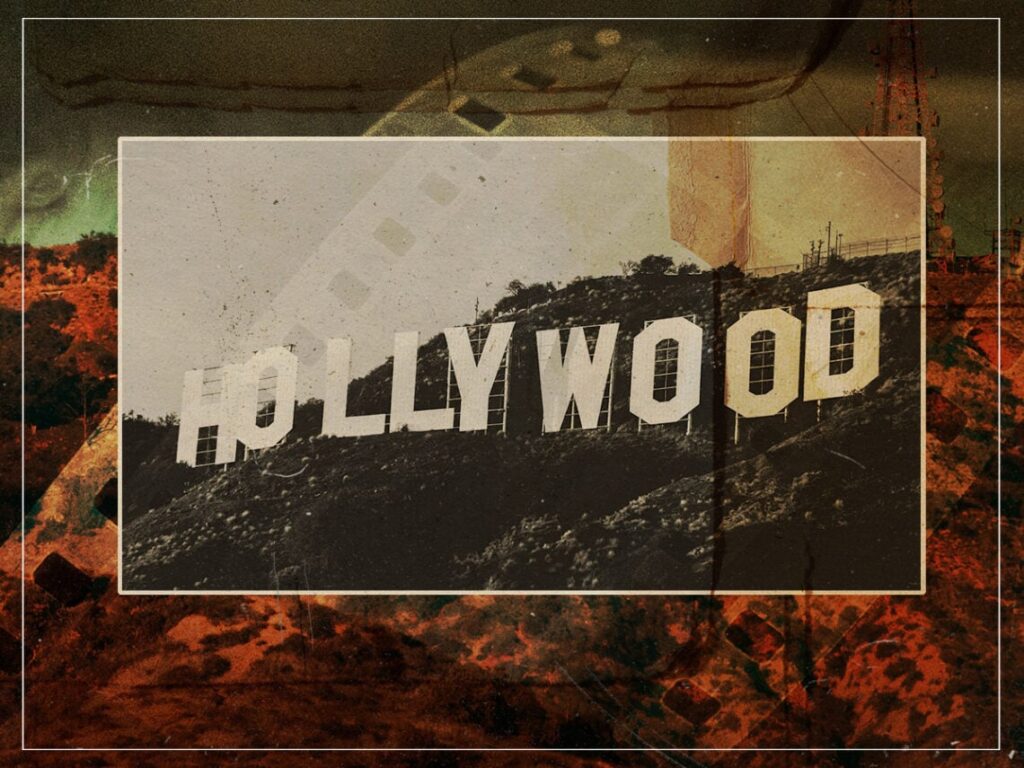Why are big movies called blockbusters?
 Posted On
Posted On
(Credits: Far Out / De’Andre Bush)
These days, it feels as though the film industry favours the blockbuster, a kind of movie that prioritizes big budgets and well-known casts, and is almost guaranteed to make a large profit. You can’t go to your local cinema without finding huge action movies, superhero franchise films or historical epics crowding the listings. While cinema is an inherently creative medium, as Hollywood has become larger and larger, profit and business have become the name of the game, resulting in many movies being made with capitalistic visions in mind before artistic ones.
Blockbusters keep the industry afloat, even if it often feels like they’re the kinds of movies that are inevitably setting it back. Of course, there are many great blockbusters out there, made artistically and acted incredibly, but it often seems as though there is no room for smaller pictures and indies to break through, too, resulting in an imbalance.
Still, blockbusters are nothing new, with the phenomenon truly taking off in the 1970s as New Hollywood began to move towards expansive and epic productions. Star Wars was a landmark moment for franchises and blockbusters, although Jaws created a phenomenon when it landed in 1975 and terrified audiences with its terrifying tale of killer sharks.
So, where does the term ‘blockbuster’ actually come from?
The origins of the term aren’t entirely known, with several different theories posited by experts, but it was first used in the 1940s in reference to powerful blockbuster bombs; however, it was very sparsely used to describe big films during this time. It wasn’t until the 1970s that the term started to be used more commonly, with people drawing parallels between blockbuster bombs, capable of extreme damage, and big movies, which could leave a lasting impact on both viewers and the box office with their expansive storylines and special effects.
Additionally, some people have suggested that the term references the fact that a successful film has the power to have cinema-goers queuing around the block to get a ticket. This was common practice in the 1970s when the term began to gain popularity, although it is widely agreed that the term was initially coined with blockbuster bombs in mind, not street blocks.
What was the first true blockbuster?
It is largely accepted that Jaws was the first true blockbuster, grossing over $100million in just two months. It emphasized the potential success for summer blockbusters, something that has become tradition for many big films in its wake. Jaws capitalised on its storyline, encouraging beach-goers to come in from the seaside and watch this horrifying story of bloodthirsty animals in the comfort of the theatre, instead.
There was lots of marketing given to Jaws, allowing it to become a financial sensation, while it emerged in cinemas on the same day across the country in hundreds of locations, allowing it to reach a wide audience straight away. Its instant success quickly led to other epic tales, typically in the science fiction, action, adventure, and historical genres, which were widely accessible to a range of social groups – no matter people’s ages, backgrounds, or gender.
Still, before Jaws, there were various movies that were labelled, often retroactively, as blockbusters, like Gone With the Wind, but these movies weren’t blockbusters in the same way that Jaws was. When Steven Spielberg’s film emerged, it coincided nicely with the industry’s increasingly capitalist marketing tactics, and with multiplex cinemas emerging and advertising campaigns becoming more elaborate, Jaws found unprecedented success.
[embedded content]
Related Topics


